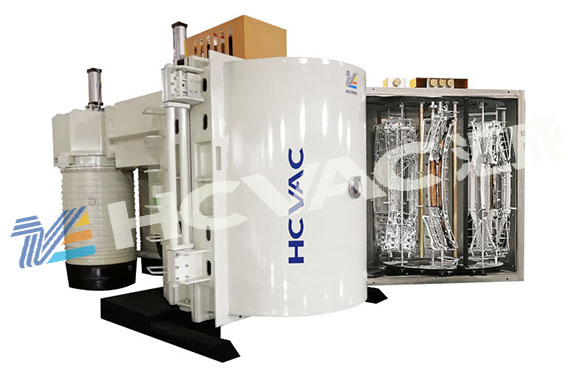The vacuum coating machine coats the workpiece in the vacuum chamber. PVD (physical vapor deposition) coating technology is mainly divided into three categories, vacuum evaporation coating, vacuum sputtering and vacuum ion coating. Corresponding to the three categories of PVD technology, the corresponding vacuum coating machines include vacuum evaporation coating machines, vacuum sputtering coating machines and vacuum ion coating machines. In the past ten years, the development of vacuum ion plating technology has been rapid, and it has become one of the most advanced surface treatment methods today. What we usually call PVD coating refers to vacuum ion coating; what we usually call PVD coating machine refers to vacuum ion coating machine.

The specific principle of PVD coating (ion coating) technology is to use arc discharge technology with low voltage and high current under vacuum conditions, use gas discharge to evaporate the target and ionize the evaporated material and gas, and use the acceleration of the electric field. It acts to deposit the evaporated substances and their reaction products on the workpiece.
The characteristics of PVD coating film layer, the film layer plated by PVD coating technology has the characteristics of high hardness, high wear resistance (low friction coefficient), good corrosion resistance and chemical stability, and the life of the film layer is longer. ; At the same time, the film layer can greatly improve the appearance and decoration performance of the workpiece.
The types of films that can be plated by PVD coating. PVD coating technology is an environmentally friendly surface treatment method that can truly obtain micron-scale coatings without pollution. It can prepare various single metal films (such as aluminum, titanium, zirconium, chromium, etc. ), nitride films (TiN, ZrN, CrN, TiAlN) and carbide films (TiC, TiCN), and oxide films (such as TiO, etc.). Thickness of PVD coating layer—The thickness of PVD coating layer is micron, and the thickness is relatively thin, generally 0.3μm ~ 5μm, and the thickness of decorative coating layer is generally 0.3μm ~ 1μm, so it can hardly affect the original size of the workpiece It can improve the various physical and chemical properties of the workpiece surface without the need for further processing after plating.
The color types of the film that can be plated by PVD
vacuum coating machine - PVD coating currently can make the color of the film layer is dark golden yellow, light golden yellow, brown, bronze, gray, black, gray black, seven colors and so on. By controlling the relevant parameters in the coating process, the plated color can be controlled; after the coating is completed, the color can be measured with relevant instruments to quantify the color to determine whether the plated color meets the requirements.



